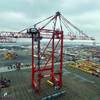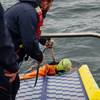As the oil and gas industry strives for cost effective execution in projects and operations while maintaining a high focus on safety and environmental footprint, innovative and smart solutions are needed more than ever.
By extracting data and knowledge from all the detailed incident investigations performed over the years, solutions might be just around the corner.
DNV GL now invites industry partners to join an industry project (JIP) to identify and have access to updated trends based on a broad range of data, including failure mechanisms, root causes, materials and equipment.
The benefit for the industry will be a systematic approach to capturing and sharing learnings from past failures and for the JIP partners to exchange experiences. JIP participants can also use the knowledge as decision support in early phase developments, and risk based inspection.
Elisabeth Tørstad, CEO, DNV GL – Oil & Gas, says: “DNV GL has conducted many of the major failure- and root cause analyses both on the Norwegian Continental Shelf (NCS) and globally, including the forensic examination of Deepwater Horizon Blowout Preventer in 2011. Our laboratories are key assets for DNV GL together with acknowledged experts within key disciplines for the oil and gas industry."
Elisabeth adds:"Supporting our global laboratory network, the DNV GL technology centre for materials, corrosions, coatings, offshore mooring and lifting in Bergen has new laboratory premises with superior infrastructure so that our customers can have standard or tailored tests to suit their needs and get test results faster."
" This will further strengthen our position within offshore mooring and lifting and materials- and corrosion technology. The most powerful test rig will have a capacity of 2900 tons which places DNV GL’s Bergen lab among the top test sites in the world,” she concluded.
Geir Egil Eie, Technology Leader Materials Technology, DNV GL – Oil & Gas, says: “Learning from previous failures and incidents, instead of repeating them, is almost like having a free lunch. The story of HISC and duplex materials shows clearly how the industry can benefit from a systematic learning approach.”












